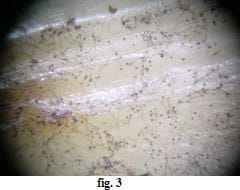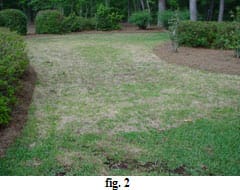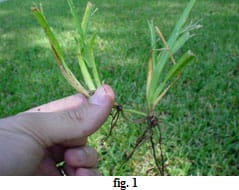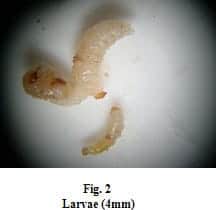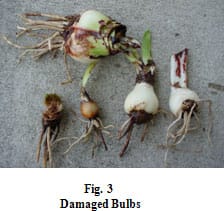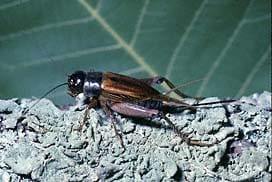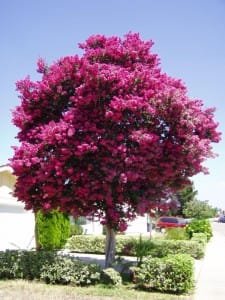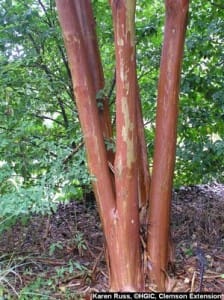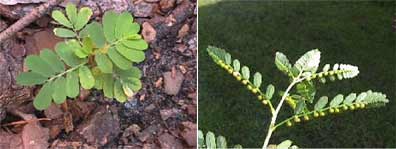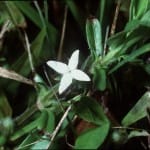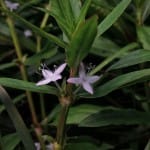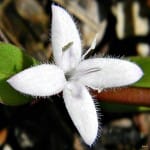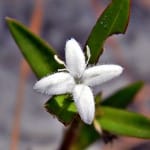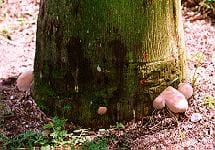Source(s):
- Jeff Michel
- Jacob G Price
Introduction
Take-All Root Rot, Gaeumannomyces graminis var. graminis, has recently emerged as a destructive disease in Georgia. The disease is a problem in many other southern states as well. Take-All Root Rot is most common in St. Augustinegrass lawns, but affects all warm season turfgrasses.
Symptoms/Signs
The naturally occurring pathogen first causes root damage which leads to noticeable symptoms such as yellowing leaf blades and dark roots (fig.1). In advanced stages (fig.2) the turf severely thins and begins dying in an irregular pattern. When the first disease symptoms are observed, the disease has been active for weeks. Dark, threadlike strands called hyphae along with anchoring structures called hyphopodia (fig. 3) can be seen under a dissecting microscope on the stolons, roots, and rhizomes of warm season grasses. The disease is primarily observed in spring and fall and is associated with high levels of moisture due to rainfall or irrigation.
Cultural Controls
If rainfall is not adequate and irrigation is used, water infrequently but deeply. Mow the turf at the correct height and remove only 1/3rd of the leaf blade per mowing. Core aerate to reduce thatch and relieve soil compaction. Use slow release fertilizers with equal amounts of nitrogen and potassium. Avoid high nitrogen applications in the fall. Texas A&M and UGA research has shown some benefit from applying ¼”of sphagnum peat moss or 2 pounds per thousand square feet of Manganese Sulfate. Avoid liming as the pathogen prefers a pH above 6.5. Avoid activities that stress turf such as herbicide applications. If turfgrass is not stressed, foliar symptoms may not be present.
Chemical Controls
This Disease is difficult to control and once advanced, there is no silver bullet. If Take-All Disease is known to be present, preventive fungicide applications may be of benefit after cultural controls have been implemented. Fungicides applied in early spring and fall such as Rubigan (fenarimol), Heritage (azoxystrobin), Banner Max (propiconazole), Bayleton (triadimefon), Cleary’s 3336 (thiophanate methyl), and Insignia (pyraclostrobin), may help control Take-All Root Rot. Apply these fungicides with 2.5-3.0 gallons of water, per thousand square feet to reach the root system or lightly water in the fungicide.
Resource(s):
Reviewer(s):
Ellen Bauske, Program Coordinator, UGA Center for Urban Agriculture, The University of Georgia College of Agricultural and Environmental Sciences.
Center Publication Number: 8
